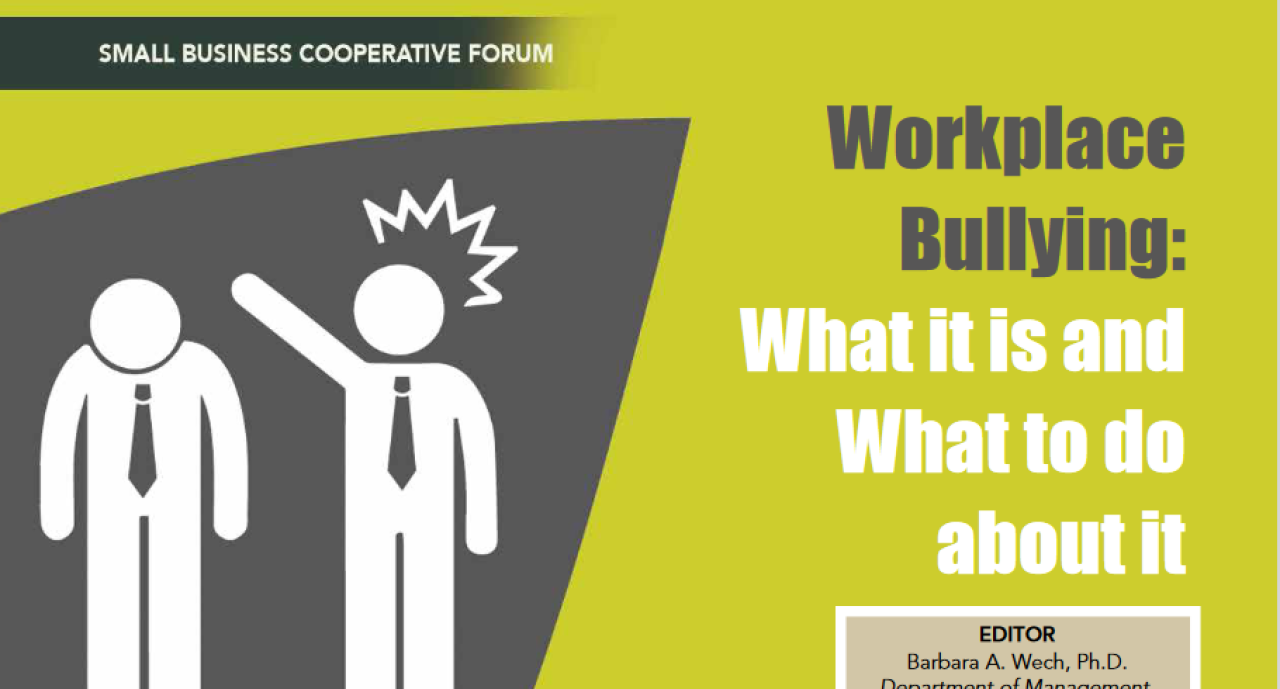
Workplace Bullying: What it is and What to do about it
Workplace Bullying: What it is and What to do about it
Workplace bullying is defined as “situations where an employee repeatedly and over a prolonged period is exposed to harassing behavior from one or more colleagues (including subordinates and leaders) and where the targeted person is unable to defend him/herself against this systematic mistreatment” (Nielsen & Einarsen, 2018, p.73). While the negative effects of workplace bullying have been documented and will be discussed further below, bullying in the workplace remains a problem. A survey of U.S. adults in 2021 (Workplace Bullying Institute, 2021) found that 30% surveyed reported being bullied at work, 19% witnessed bullying, 49% reported being affected by it, and 66% are aware that it occurs.
Workplace bullying can be found globally in all industries and professions, and accounting is no exception. As you can see from the definition above, harassment is an example of bullying behavior. PriceWaterhouseCooper settled a worker’s compensation claim in part due to a junior accountant alleging he was bullied for being Tasmanian (Tadros, 2017). In 2018, Ernst & Young (EY) partner, Jessica Casucci, filed a sexual harassment suit against the company. Later that same year, another former EY partner, Karen Ward, sued the firm alleging sexual harassment and retaliation. Two executives, partner John Martinkat and principal Michael McNamara, were fired because of the lawsuits. The Financial Times reported that Deloitte U.K. fired approximately 20 partners between 2014 and 2018 for inappropriate behavior, including sexual harassment and bullying. KPMG told the Financial Times that during that same timeframe, seven of its U.K. partners left the firm due to inappropriate behavior. In 2023, it was reported to the Australian Congress that EY in the previous 2 years had fired 8 partners for behavioral issues including bullying (Tadros, 2023). As you can see from these examples, the world of accounting is not immune from bullying.
While accountants work in all sectors and industries, our focus here is on cooperatives. Cooperatives in the United States range in size from small neighborhood grocery stores to a $15 billion organization such as Land O’ Lakes. However, the median size of a co-op’s workforce is 10, clearly putting most co-ops in the small size range (US Worker Cooperatives, n.d.). If a small business is not proactive in combating workplace bullying, the negative effects and costs of such behaviors will be substantial and the results could be devastating (Baillien, Neyens, & de Witte, 2011). For example, absenteeism and turnover, both results of bullying, are more costly to a small organization than to a large one that has more human and financial capital to address negative outcomes.
In the remainder of this article, I will cover several specifics about workplace bullying. I will identify what bullying looks like, the costs of workplace bullying, how to respond to it as an employee and as a manager, and how to help prevent it.
NSAC's specialized technical journal, The Cooperative Accountant (TCA), tailored exclusively for its members, has unveiled its Summer 2024 edition. Explore the content online or opt to download and print the PDF.
To read more of this article, please visit Connect.